
Megatron Eventos, designed for the series’ main antagonist, characteristically dwarfs the neighboring structures. Photographed by Santos Winston Miranda Ramos for PIN–UP.

Symmetry and geometry, derivative of early Aymara patterning, find their way onto Monumental Cafeflor in El Alto. Photographed by Santos Winston Miranda Ramos for PIN–UP.
Arriving in El Alto, Bolivia, you likely won’t notice anything until you’ve taken several measures to mitigate your altitude sickness. If you’re lucky, the first person you see will hand you two dubious-looking red capsules, and shortly thereafter, the city will come into focus. Once known mainly as a suburb of La Paz, the city of El Alto has become a destination unto itself in recent decades. Drawing tourists from the capital on Teleférico cable cars, the current interest in Bolivia’s second city comes in no small part from the insurgence of a new architecture.
Having read about Freddy Mamani prior to a recent trip to Bolivia, I kept my eyes peeled from the moment I arrived in El Alto, eager to spot one of the architect’s creations. Instead, the Neo-Andean exteriors I saw mixed in among the adobe-brick structures were imitations that nearly outnumbered the original Mamani homes. Mixed-use buildings with brightly lacquered façades of shiny metal and glass, some with themes from Transformers, Iron Man, or Super Mario, lined the pale, dusty streets.

Megatron Eventos, designed for the series’ main antagonist, characteristically dwarfs the neighboring structures. Photographed by Santos Winston Miranda Ramos for PIN–UP.
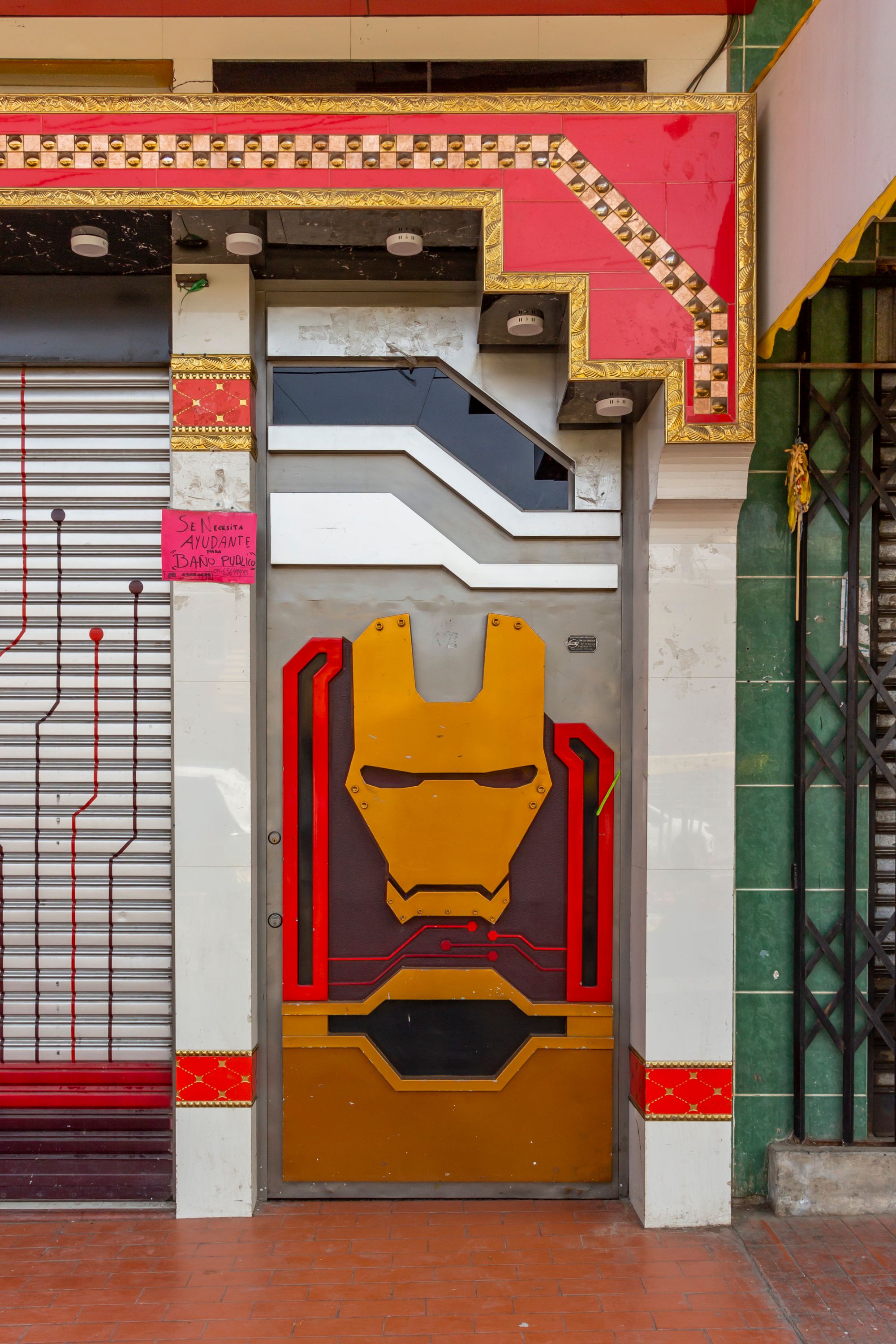
An Iron Man-inspired façade. Photographed by Santos Winston Miranda Ramos for PIN–UP.
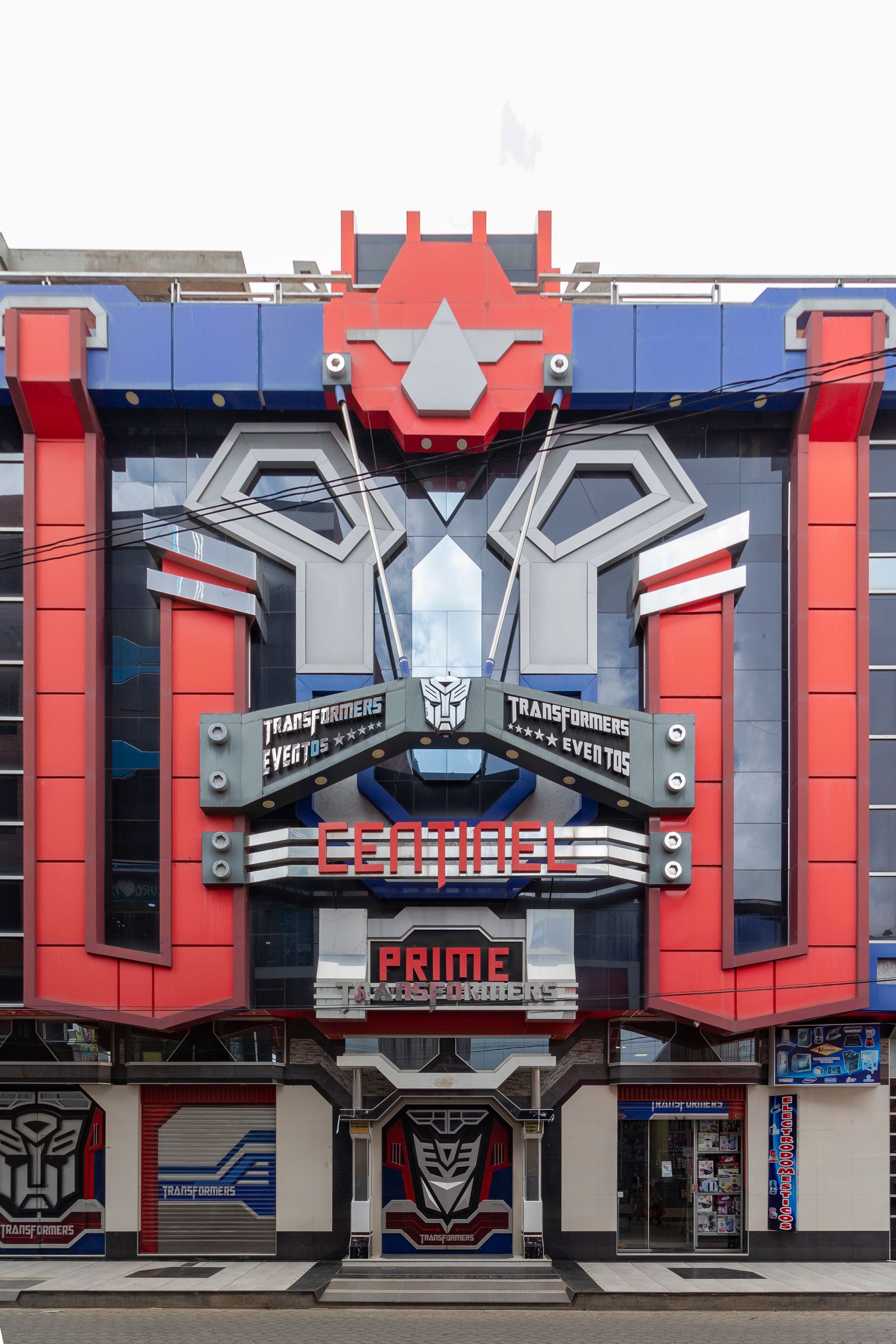
Eventos Transformers is labeled as a gay night club on Google Maps. Photographed by Santos Winston Miranda Ramos for PIN–UP.
Outlined in LED light strips and rendered in metallic panels, reflective plate glass, and saturated pigments, these spaceship-like pastiches first descended upon El Alto during the mid-2010s. Freddy Mamani, the original architect behind Neo-Andean design, brought the style to the world stage with his globally-renowned “cholets.” These structures, named for a hybrid of the words “chalet” and “cholo,” glimmer amongst a tapestry of wildly interconnected streets in the bustling city of El Alto. Since the mid aughts, Mamani’s work has become the new face of Bolivian prosperity: a self-taught designer, conceiving tall, glistening buildings in futuristic vernacular. A contemporary Latin cousin of the Bauhaus, Neo-Andean design takes its cues from Aymara iconography with a focus on vibrant colors and intricate geometry.
At street level, they’re home to commercial spaces such as convenience stores, party supply shops, and dentist offices. On the second or third floors, you will usually find party halls or ballrooms, in keeping with Mamani’s ideal of creating a home for cultural spaces. Above them, traditionally, are private homes for those who own the businesses and ballrooms below. The other sides of these buildings tend to be made from exposed brick or cast concrete, occasionally even left unfinished, with massive openings where windows should be. Here, enterprising dwellers take advantage of economic incentives for new development (in Bolivia, the government may not levy property taxes on unfinished homes). Still, their futuristic grandiosity sits in stark contrast to their terracotta-tin-roof neighbors.

One example of an unfinished building, where the uppermost structure appears almost as an afterthought. In adobe brick and concrete, the windows have yet to be installed. This event space, Samurai Eventos, also says Nibol above the entrance. This name refers to one of the major players in the vehicle sector, trading in international cars. Recently, they signed a deal with FOTON, a new retailer out of China. Photographed by Santos Winston Miranda Ramos for PIN–UP.
Santos Churata, the man often credited with the coinage of the derivative Transformers style, completed a dozen Mamani dupes before his passing in 2021. One, Local de Eventos Iron Man, was finished in 2019 and features a hulking replica of the titular character’s head that appears to float on the building’s exterior. Another, Salon de Fiestas Bumblebee, was finalized last year. Sculptor Ramiro Sirpa crafted several of the figures affixed to the fronts of Churata’s designs, such as the Bumblebee and Iron Man replicas. In an interview for Bolivia TV, Sirpa explains how he makes them by hand from metal, resin, fiberglass, and lights, calling them “one hundred percent Bolivian.”
These unconventional status symbols tell a deeper story about the country’s socioeconomic state. Beyond the Spanish colonial influence, a new paternalistic relationship has formed in recent decades between China and Bolivia, with the South American country even using yuan in trade as of 2023 in a move to buck American hegemony. Most of the industrial materials required for these façades arrive from China. Although they are meant to embody a purely Bolivian ethos, they simultaneously enshrine U.S. cultural exports like the Transformers, and even, confusingly, the Statue of Liberty. Though no longer the primary benefactor of Bolivia, the United States hasn’t lost its cultural influence.
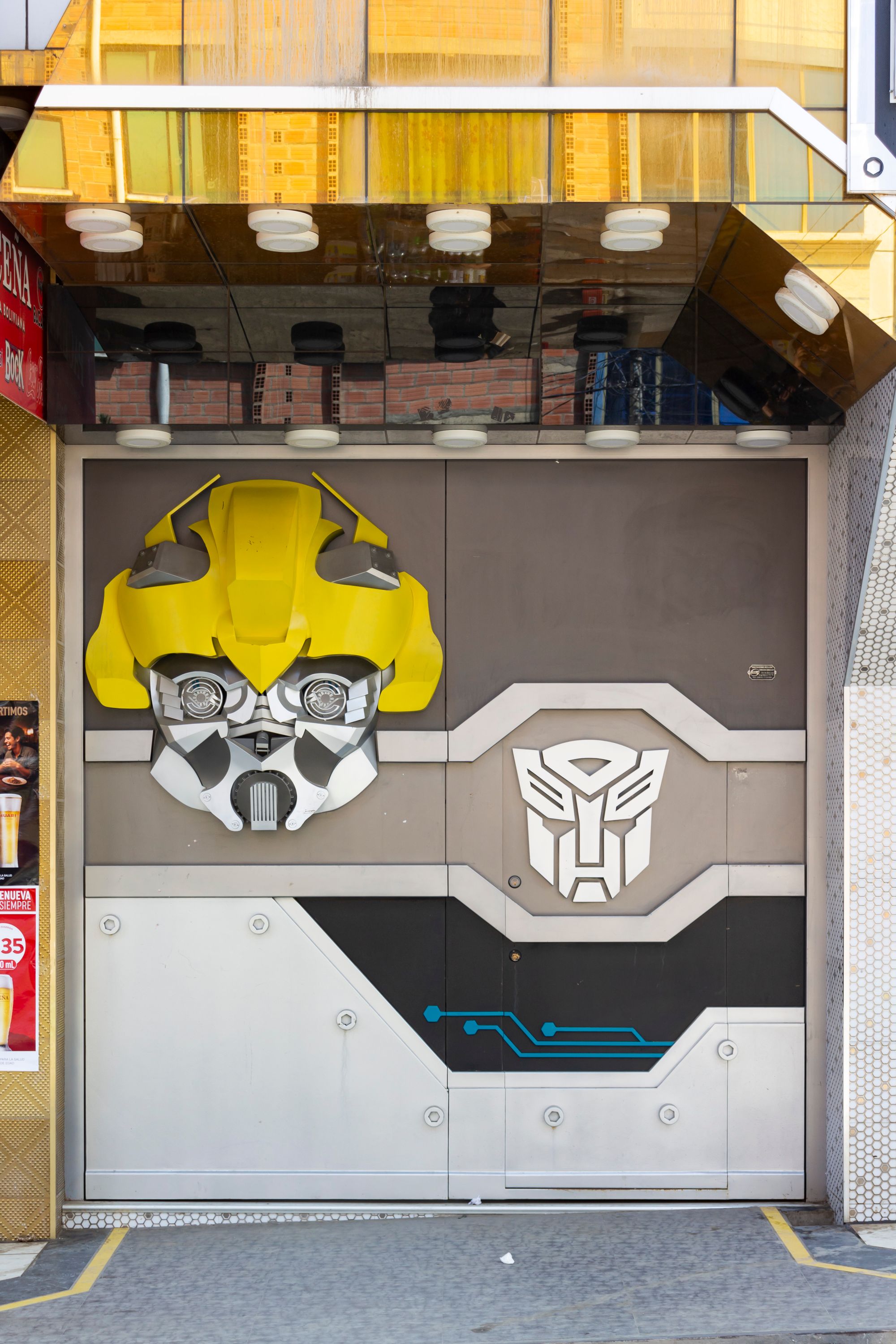
Photographed by Santos Winston Miranda Ramos for PIN–UP.
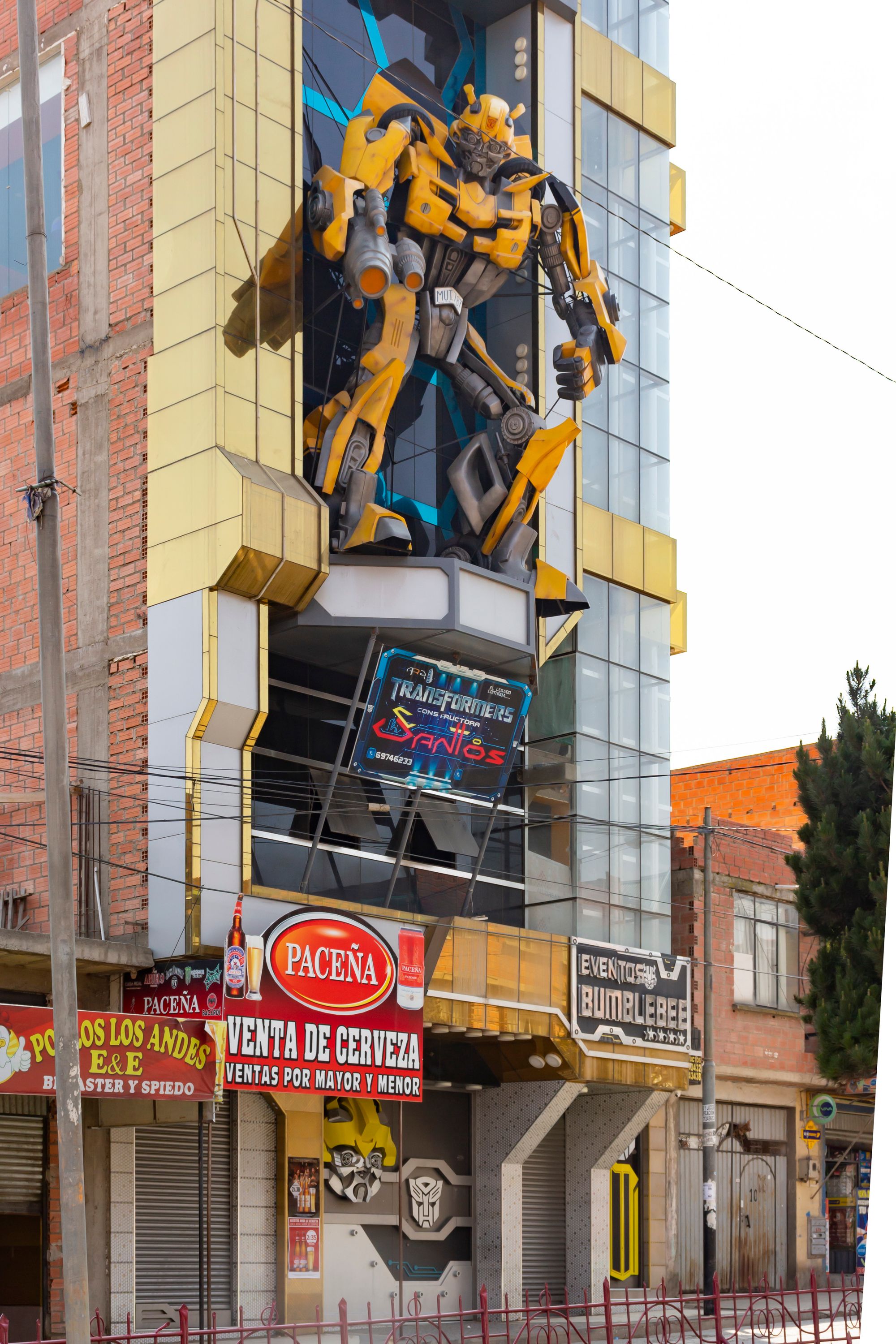
Though Santos Churata died in 2019, his Salon de Eventos Bumblebee was carried to completion in 2023 with the help of his daughter, Marjhely. Ramiro Sirpa built the Transformer affixed to the front. Photographed by Santos Winston Miranda Ramos for PIN–UP.
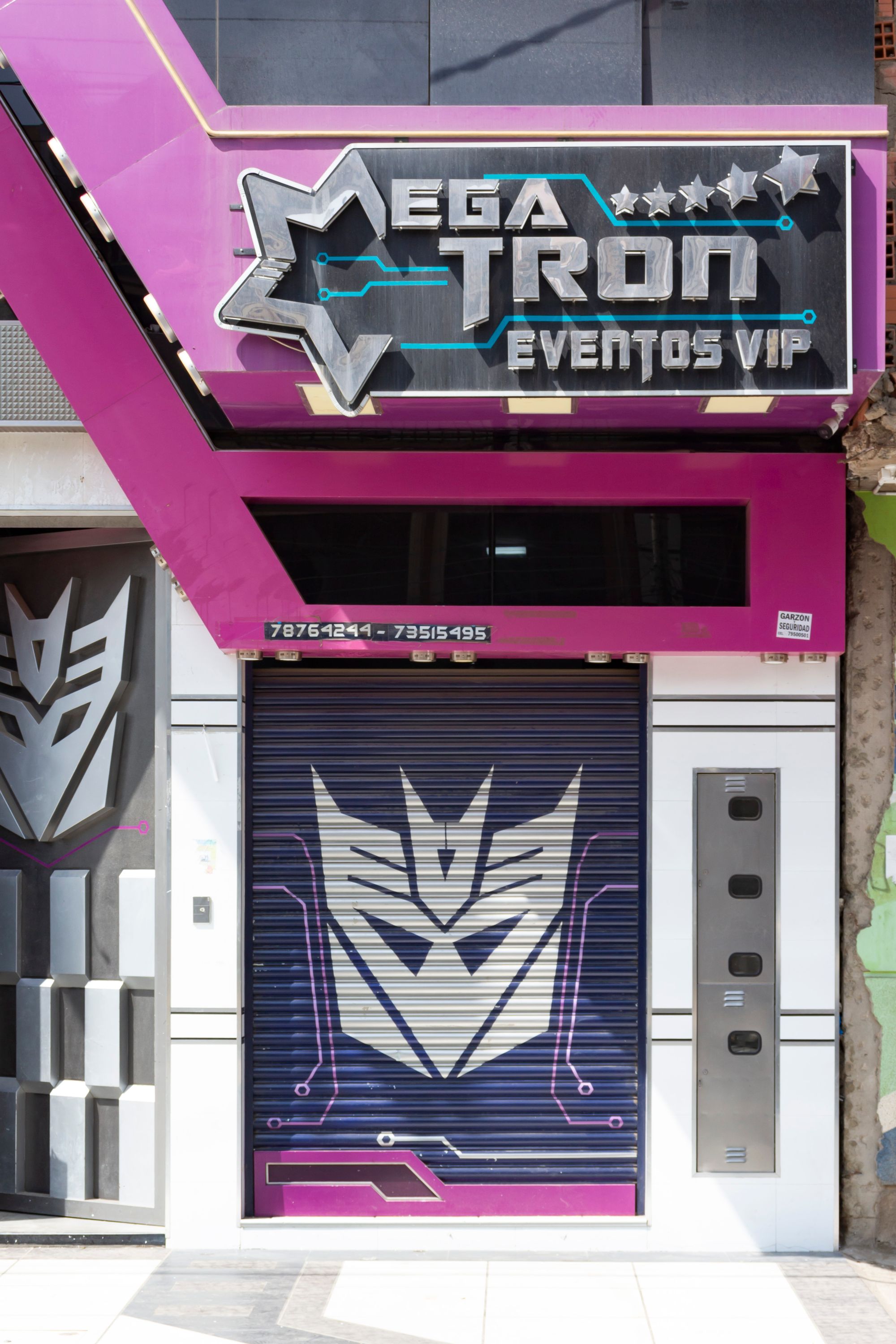
Photographed by Santos Winston Miranda Ramos for PIN–UP.
As relations between the U.S. and Bolivia are deteriorating over political differences, the government in La Paz is looking to China for support — and receiving it in spades. China’s largest investment in Bolivia comes in the form of infrastructure; new highways slowly expand throughout the country as a part of China’s Belt and Road Initiative. Most of the cars that traverse the new roads are also primarily Chinese imports. Of course, the arrangement isn’t one-sided. Many countries have their eye on Bolivia’s deep lithium deposits, a key metal for batteries in products like electric vehicles, and China wants first dibs.
The proliferation of franchise-inspired architecture in El Alto appears to track with the region’s economic expansion, which lasted through around 2019. The country experienced a commodity boom that peaked in 2014 and filled the pockets of a new Aymara bourgeoisie: a young and ambitious sect relocating to El Alto in droves. Donning traditional polleras and bowlers, they work as clothing merchants, automotive importers, or traders. As Bolivia’s second largest city, El Alto has experienced rapid growth over the past decade as rural Indigenous communities seek more lucrative opportunities for work, even within the country’s largely informal economy. However, since the country has found itself back in a financial crisis because of a dollar shortage, China has inserted itself as an influential force in its economy.
Current Bolivian president Luis Arce is scrambling to resurrect the economy and catch up to world leaders in the production of lithium batteries. Rather than exporting raw materials to China, the U.S., or Germany, Arce sees a future in battery production for Bolivia itself. And if Chinese aid is a gift horse, he won’t be looking it in the mouth. The Chinese-backed infrastructure is too vital for getting the country on a path to modernity.
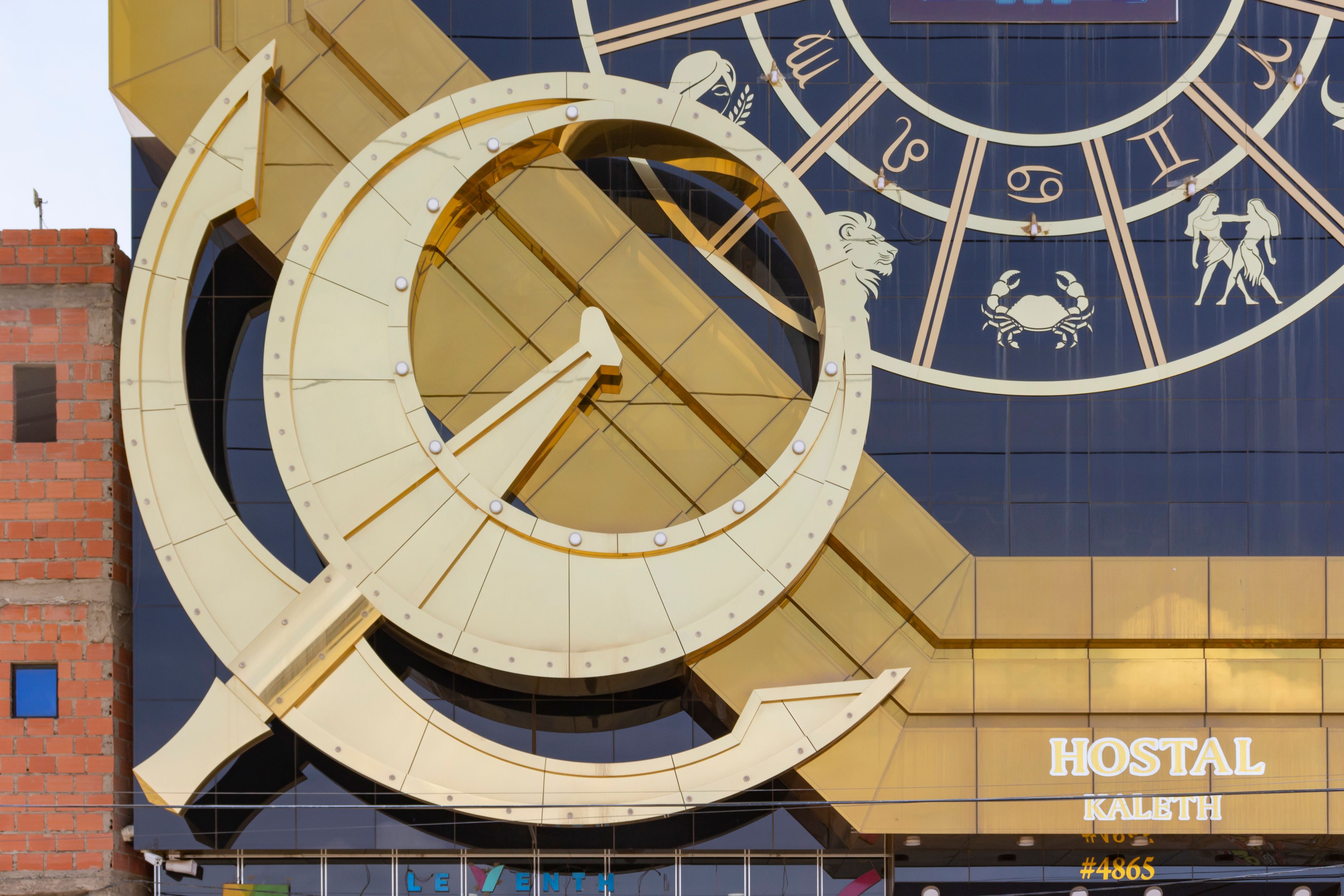
Photographed by Santos Winston Miranda Ramos for PIN–UP.
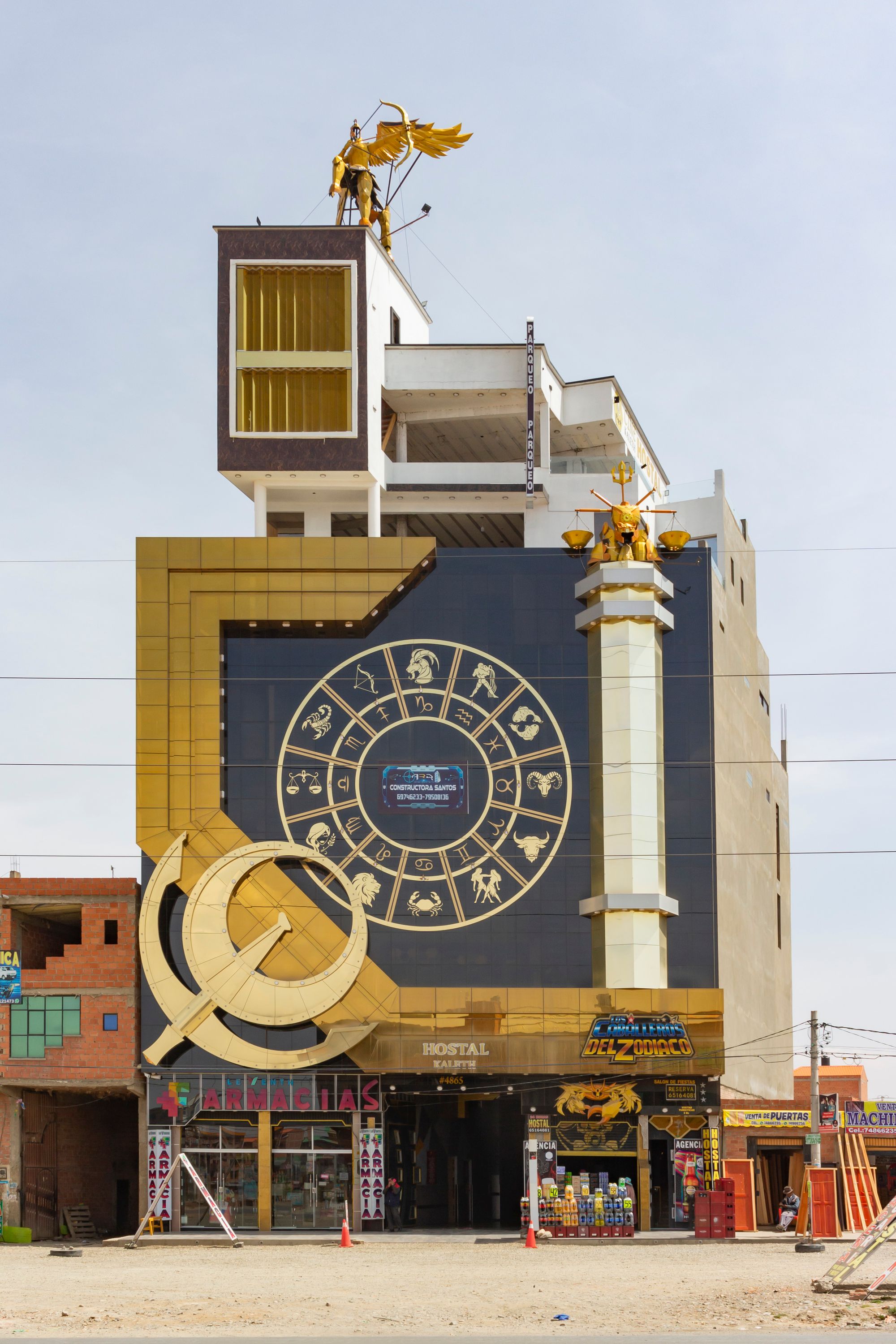
Photographed by Santos Winston Miranda Ramos for PIN–UP.
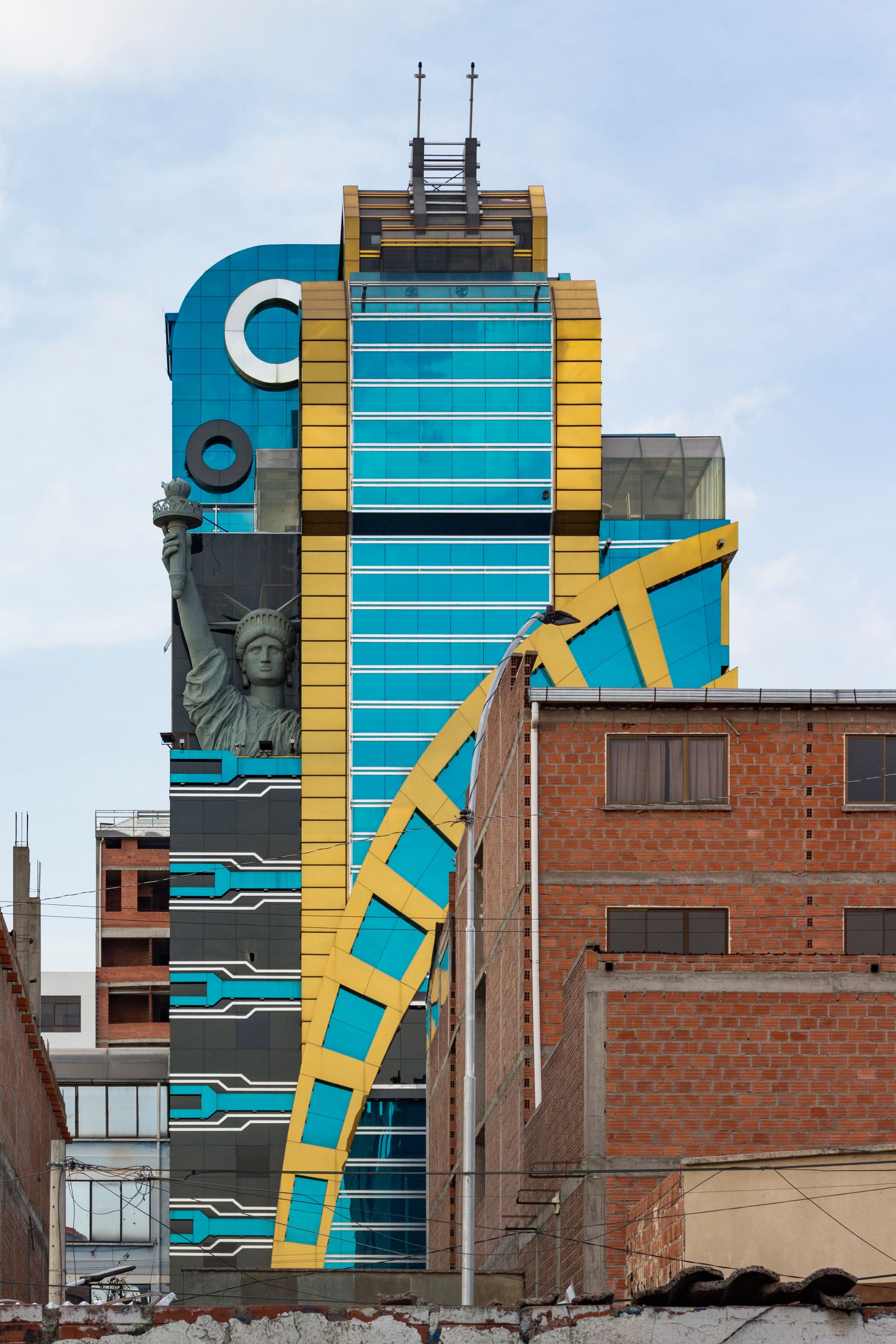
Photographed by Santos Winston Miranda Ramos for PIN–UP.

Photographed by Santos Winston Miranda Ramos for PIN–UP.
The new Aymara bourgeoisie are, in a way, practicing indigenous futurism through architecture. They are acknowledging the melting pot of influences from which they came — imperialist and otherwise — while designing and building for the Bolivia they want. In 2022, an event during Bolivia’s Futures Week conference took place at the Local de Eventos Iron Man, to both plan for and celebrate the city’s trajectory from overlooked urban sprawl to “tecnopolis” by the year 2030.
Like many other countries in Latin America, Bolivia is in a constant state of reconciliation between its colonial past and the desire for a global future. Even extolling symbols like Transformers or the Statue of Liberty, which are American on their face, are a manifestation of kitsch, which has always been a part of the Latin American sensibility. These rhetorical Mamani-esque façades convey more than an appreciation for the media franchises they depict. They lionize commerce and invite globalism, but on their own terms. Though the materials are imported from China — a now indispensable benefactor — their aesthetic is one chosen by the builders and owners themselves. Their inhabitants represent the new vanguard of Bolivia’s “experimental economy,” a hybrid of socialism and capitalism that centers agency above all else. With glazed glass, industrial metal window casing, and bright synthetic paint, the wealthy of El Alto are signaling a readiness to enter the high-tech ranks of the global superpowers. Shooting up like a flare in the sky at 13,615 feet, the Transformers are hard to miss.
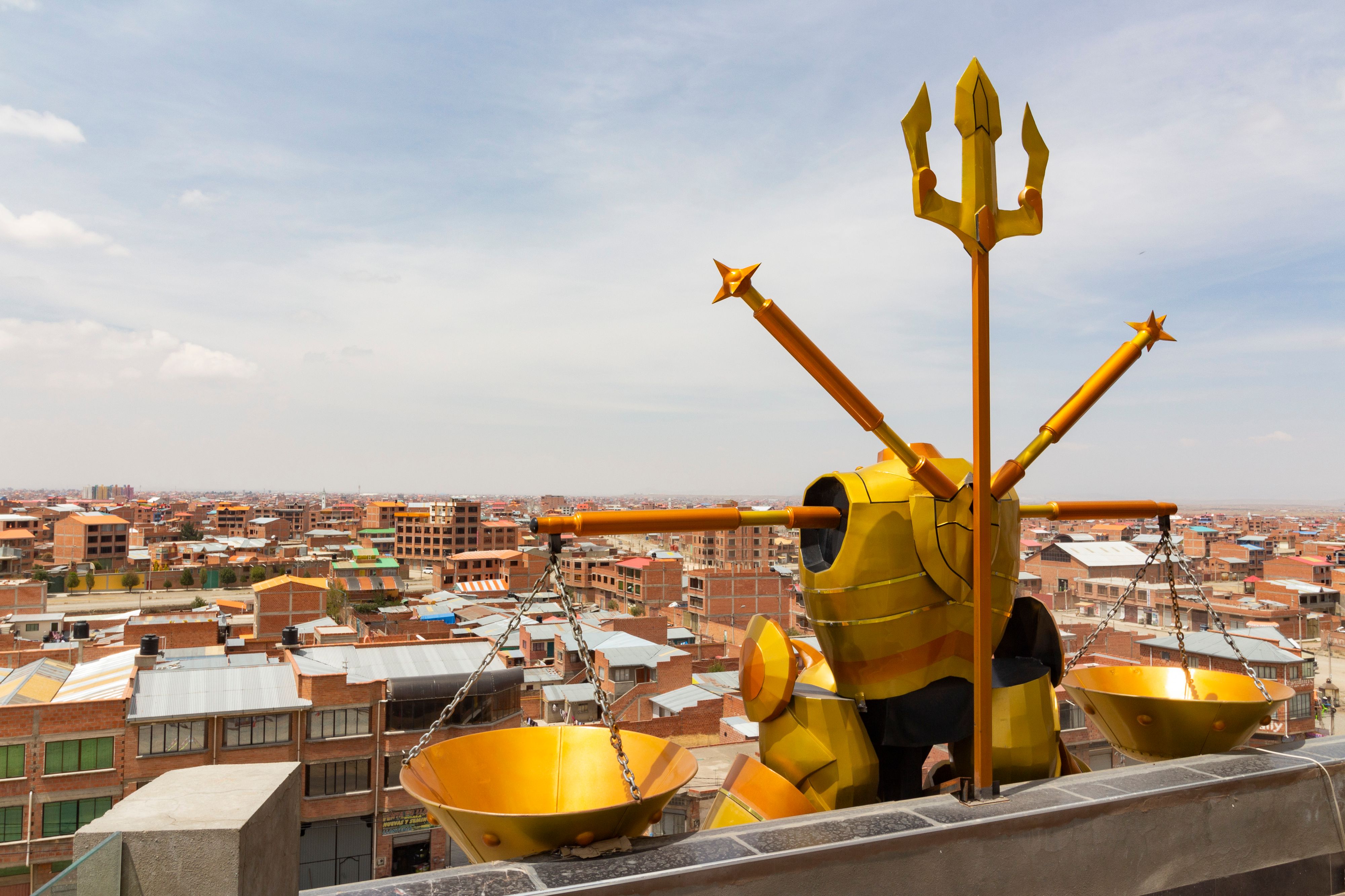
A massive sculpture of Sagittarius poses heroically on the roof of the Caballeros del Zodiaco, an event space and hostel, with rooms themed for each sign. Photographed by Santos Winston Miranda Ramos for PIN–UP.